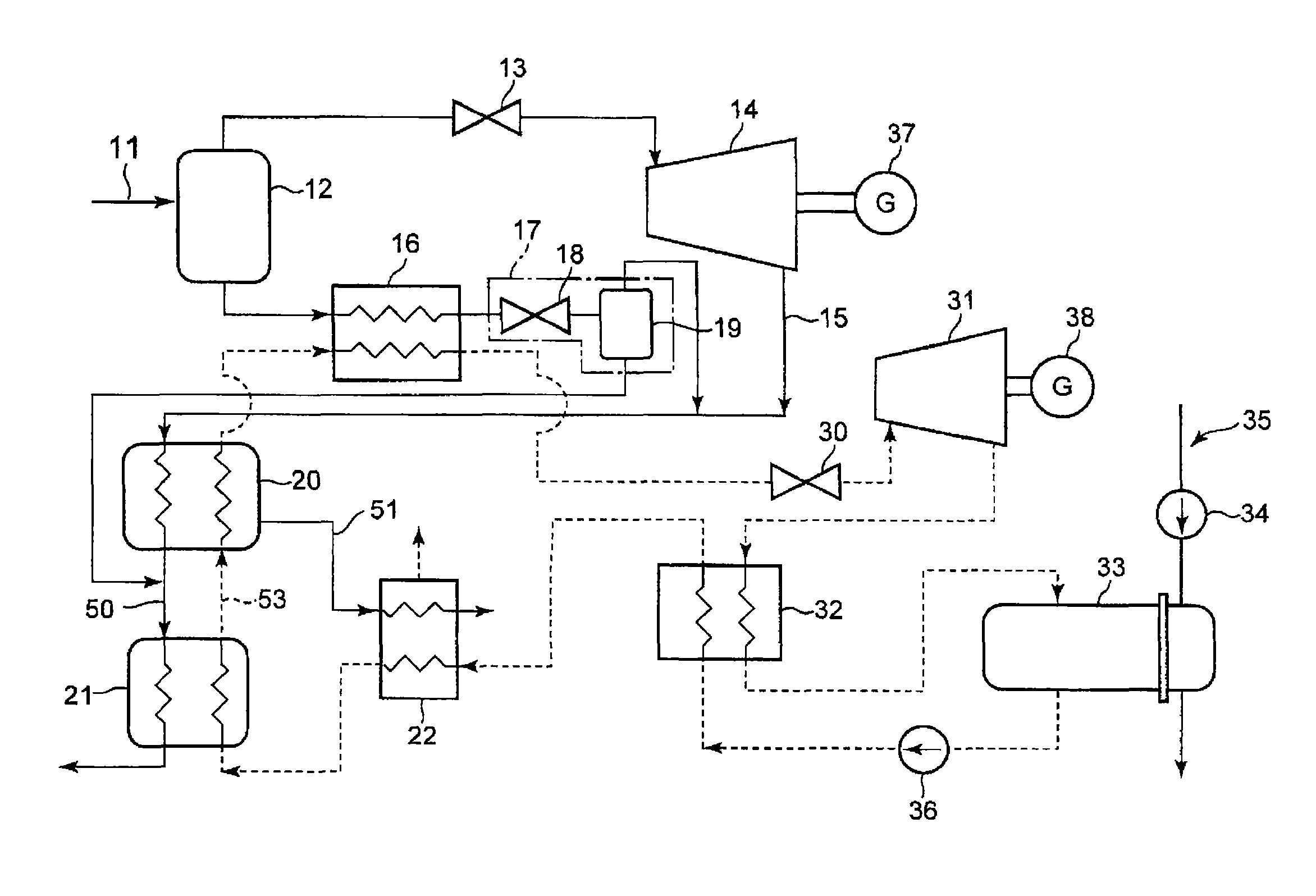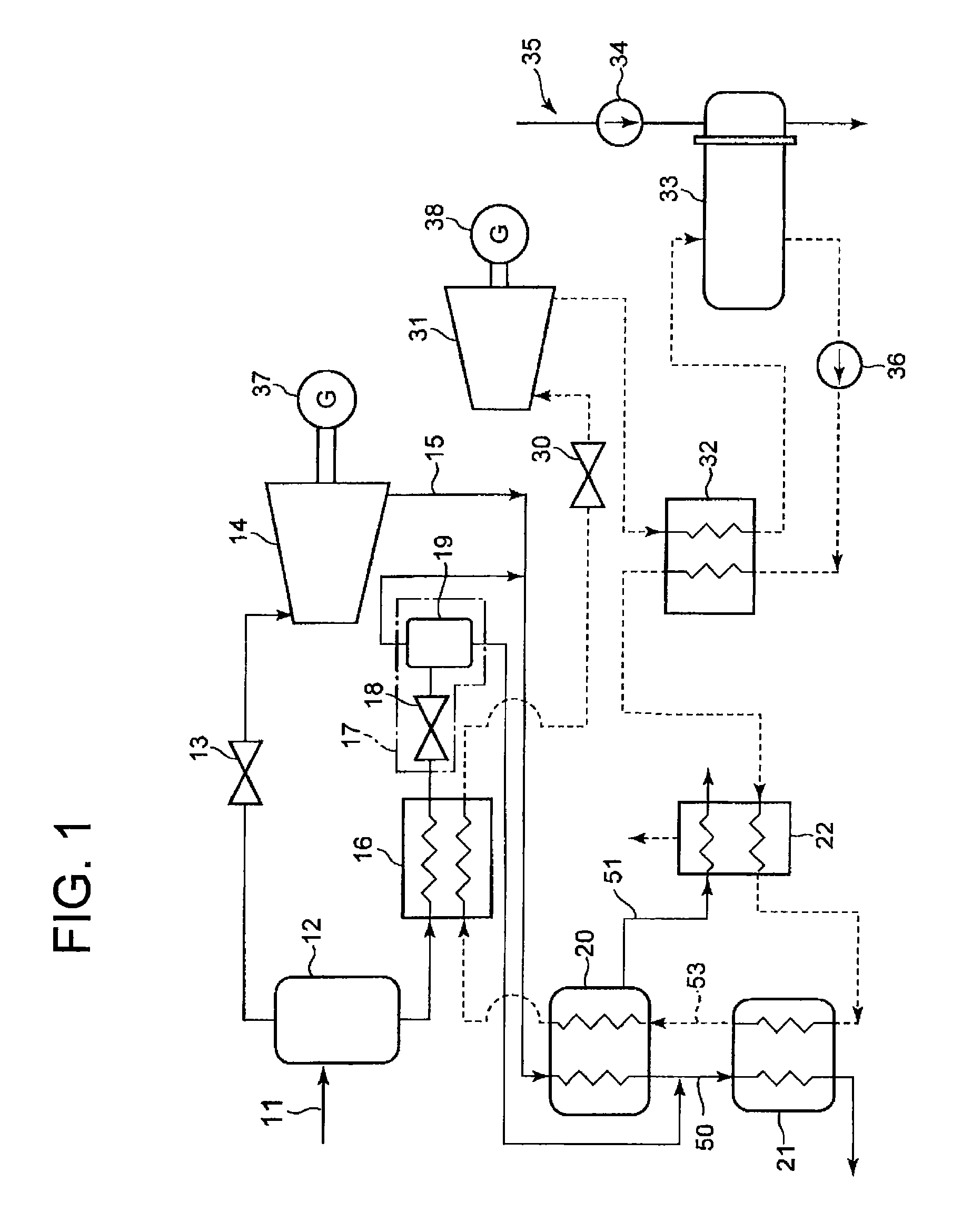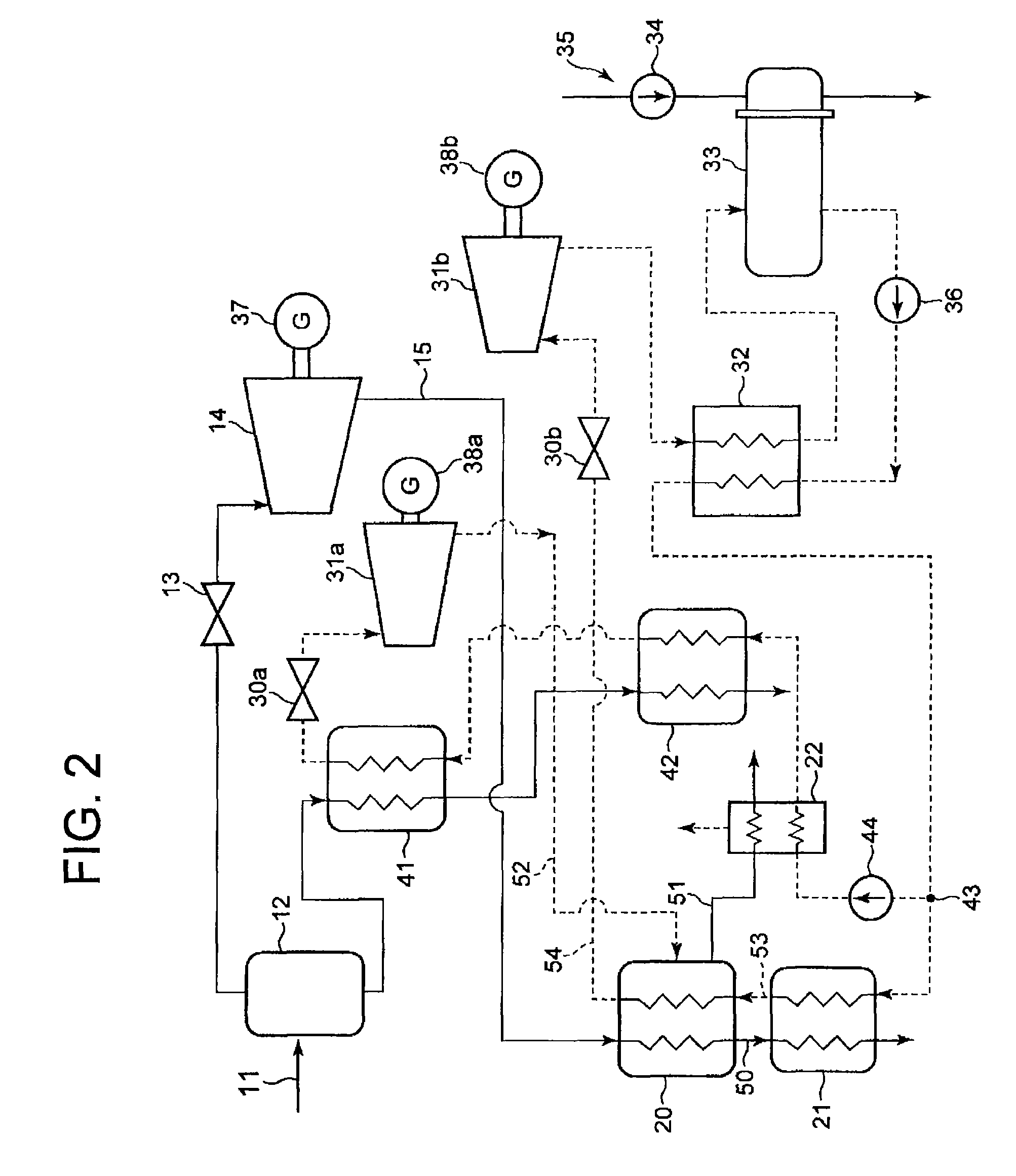Binary power generation system
a power generation system and power generation technology, applied in the field ofbinary power generation systems, can solve the problems of low power generation efficiency, high construction cost, and low efficiency of new thermal power plants and the like, and achieve the effects of high enthalpy, high proportion of flashing steam, and high enthalpy
- Summary
- Abstract
- Description
- Claims
- Application Information
AI Technical Summary
Benefits of technology
Problems solved by technology
Method used
Image
Examples
first embodiment
[0033][First Embodiment]
[0034]FIG. 1 is a system diagram showing a configuration of a first embodiment of the binary power generation system according to the present invention.
[0035]
[0036]Initially, a configuration of a heat source water system will be described along a flow of supplied geothermal heat source water.
[0037]Geothermal heat source water piping 11 is connected to a first pressure reducing steam-liquid separator (flasher) 12. Geothermal heat source water supplied to the first pressure reducing steam-liquid separator 12 through the geothermal heat source water piping 11 is reduced in pressure there, and separated into high pressure water steam and high pressure hot water (liquid water). The generated water steam is sent to a steam turbine 14 via a water steam governing valve 13. Low pressure steam having worked in the steam turbine 14 is discharged through steam turbine return piping 15.
[0038]The high pressure hot water generated by the first pressure reducing steam-liquid...
second embodiment
[0050][Second Embodiment]
[0051]FIG. 2 is a system diagram showing a configuration of a second embodiment of the binary power generation system according to the present invention. FIG. 3 is a longitudinal sectional view showing a specific configuration of a condenser / evaporator according to the second embodiment.
[0052]
[0053]Geothermal heat source water piping 11 is connected to a first pressure reducing steam-liquid separator 12. Geothermal heat source water supplied to the first pressure reducing steam-liquid separator 12 through the geothermal heat source water piping 11 is reduced in pressure there and separated into high pressure water steam and high pressure hot water (liquid water). The water steam generated here is sent to a steam turbine 14 via a water steam governing valve 13. Low pressure steam having worked in the steam turbine 14 is discharged through steam turbine return piping 15.
[0054]The high pressure hot water (liquid water) generated by the first pressure reducing s...
third embodiment
[0085][Third Embodiment]
[0086]FIG. 4 is a system diagram showing a configuration of a third embodiment of the binary power generation system according to the present invention.
[0087]This embodiment is a modification of the second embodiment. Differences from the second embodiment will be mainly described here.
[0088]In this embodiment, part of the steam is extracted at an intermediate stage. The extracted steam is sent to the condenser / evaporator 20 through the steam turbine return piping 15.
[0089]Water steam discharged from the lowest stage of the steam turbine 14 is sent to a condenser 91 through steam turbine discharge piping 90. The condenser 91 is connected with a cold water system 93 including a cold water pump 92. The cold water system 93 cools the water steam in the condenser 91 into condensate. The pressure inside the condenser 91 is preferably lower than or equal to atmospheric pressure.
[0090]As described above, this embodiment differs from the second embodiment in that the...
PUM
 Login to View More
Login to View More Abstract
Description
Claims
Application Information
 Login to View More
Login to View More - R&D
- Intellectual Property
- Life Sciences
- Materials
- Tech Scout
- Unparalleled Data Quality
- Higher Quality Content
- 60% Fewer Hallucinations
Browse by: Latest US Patents, China's latest patents, Technical Efficacy Thesaurus, Application Domain, Technology Topic, Popular Technical Reports.
© 2025 PatSnap. All rights reserved.Legal|Privacy policy|Modern Slavery Act Transparency Statement|Sitemap|About US| Contact US: help@patsnap.com



